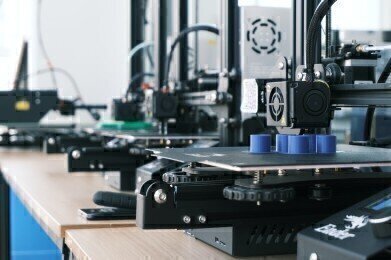Water/Wastewater
Could a 3D Printer Help Fight Pollution?
Apr 29 2016
A team of researchers from the American University in Washington have successfully created a polymer matrix capable of fighting pollution using a 3D printer. The technique, which is recounted in full in the journal Science and Technology of Advanced Materials, is a two-stage process.
Firstly, the team fused together titanium dioxide (TiO2) particles which were chemically active with specially designed pieces of plastic. They then used this mix as the material to create a polymer matrix from a 3D printer commercially available to everyone.
Using Nanoparticles to Eliminate Pollution
Back in 2012, scientists from Giessen University in Germany found a way to treat water using metal nanoparticles. Among other things, the technique was capable of eliminating pollutant elements from wastewater and restricting the spread of bacteria in potable water supplies.
While the Giessen team used nanoparticles to combat pollution, they did not do it in quite such an innovative way as the researchers at the American University. Here, Matthew Hartings (lead scientist on the project) and his team harnessed the pollution-mitigating powers of TiO2, which is capable of breaking up contaminants in air, water and soil when combined with sunlight.
The team showed off its abilities by placing the matrix in a tub full of water along with an organic molecule. Before long, the TiO2 in the matrix had reacted with the sun to destroy the molecule and leave no trace. Similarly, the matrix was also demonstrated to speed up the degradation of tracer dye (rhodamine 6G) in the water.
A Ground-breaking Achievement
If Harting and his team are correct, the experiment represents the very first time that an off-the-shelf 3D printer has produced objects that are chemically active – and he insists that the potential applications of the technology don’t end here, either.
“It’s not just pollution, but there are all sorts of other chemical processes that people may be interested in,” explained Harting, who is also a professor of chemistry at the Washington-based school of learning. “There are a variety of nanoparticles one could add to a polymer to print.”
Now that the team are aware that chemically active substances can be printed (providing the nanoparticles are present in the final product by a concentration of 10% or less), they are eager to continue further testing. Among other things, they wish to ascertain what the most effective shape of a matrix is, in terms of removing pollutants from the atmosphere.
It’s not the first time that a 3D printer has been used to benefit the environment, though in the past such aid has taken a very different form. In 2013, researchers from the University of Nottingham investigated how creating structural walls resembling termite mounds with a 3D printer could improve air circulation and interchange fresh and stale gases easily.
Events
Apr 22 2024 Hannover, Germany
Apr 23 2024 Kuala Lumpur, Malaysia
Apr 24 2024 Sao Paulo, Brasil
May 05 2024 Seville, Spain
May 13 2024 Munich, Germany













